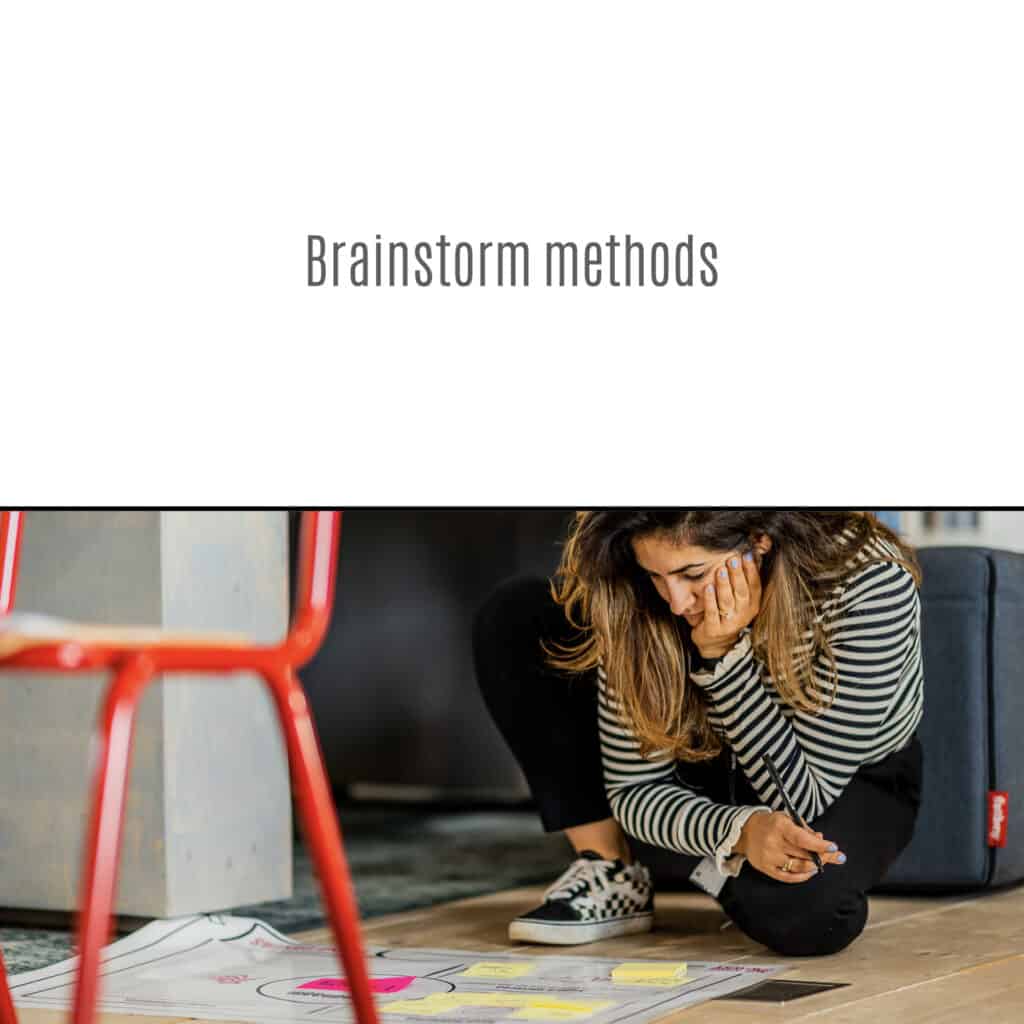
We’ve all brainstormed. Whether this is in the workplace or on a private basis, most people are familiar with it. You can brainstorm in many ways or through various techniques. We will highlight a number of methods to keep you up to date.
The brainstorming method is a process of generating ideas and solutions by actively engaging in thought and discussion with a group of people. It is typically used to find creative solutions to problems or challenges.
Here are the basic steps of the brainstorming method:
By following these steps, you can effectively use the brainstorming method to generate ideas and find creative solutions to problems.
Here are some general rules that can help to ensure that a brainstorming session is productive and effective:
By following these rules, you can help to ensure that your brainstorming session is productive and effective, and that you are able to generate a wide range of ideas.
Here are a few examples of questions that can be used to stimulate ideas during a brainstorming session:
These are just a few examples of questions that can be used to stimulate ideas during a brainstorming session. It’s important to tailor the questions to the specific problem or challenge being addressed, and to encourage participants to come up with as many ideas as possible without worrying about criticism or evaluation.
A brainstorming session is a meeting or gathering where a group of people actively engages in thought and discussion in order to generate ideas and find solutions to problems or challenges. The goal of a brainstorming session is to encourage creative thinking and come up with as many ideas as possible without worrying about criticism or evaluation.
A brain dump is a process of quickly and spontaneously writing down all of the ideas, thoughts, or tasks that are currently on your mind. The goal of a brain dump is to get everything out of your head and onto paper, so that you can better organize and prioritize your thoughts.
Here is an example of a brain dump:
As you can see, a brain dump can include a wide range of ideas, thoughts, and tasks. The goal is to get everything out of your head and onto paper, so that you can better organize and prioritize your thoughts.
STUDIO.WHY is happy to help you go through the brainstorming methods and set up a successful session. Are you curious about how we give substance to brainstorming? Then follow our free webinars, free email course or training courses. Do you want to know more or do you have any questions? Please fill in the contact form below without obligation so that we can discuss the possibilities together!
Brainstorm techniques
https://studiowhy.com/studiowhy-design-thinking/
Subscribe to our 3-weekly newsletter: The Innovators Journey to get valuable insights, tips, resources and special offers to drive change.
We are dedicated to helping individuals and organizations unlock their innovation potential. Our team offers a range of services including webinars, workshops, tailored programs, coaching, and training that can be tailored to fit your specific needs and goals. Whether you are a large group or an individual seeking one-on-one support, we have options to accommodate you. Contact us today to discover how we can help drive innovation and success within your organization.
Education
Public Service
Healthcare
Infra & Mobility
Tech & ICT
Food & Pleasure
Finance
STUDIO.WHY
Genteldijk 5
4191 LD Geldermalsen
The Netherlands
We set the language based on your browser settings. If you would like to visit the site in another language you are most welcome to select that here!